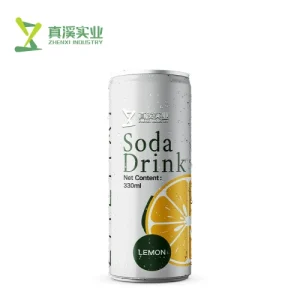Carbonated drinks have been a staple of refreshment for centuries, captivating consumers around the world with their effervescent zing. From the iconic fizz of sodas to the crisp tingle of sparkling waters, these beverages deliver a unique sensory experience that is often associated with feeling refreshed and revitalized. But what exactly makes carbonated drinks so appealing? Here’s a deep dive into the science and sensory magic behind this beloved drink category.
The Science of Carbonation
Carbonation is the process of dissolving carbon dioxide (CO2) gas into a liquid under pressure. When the pressure is released upon opening a bottle or can, the gas escapes in the form of bubbly effervescence. The concentration of CO2 in carbonated drinks typically ranges from about 1.5 to 4 volumes, meaning that for every liter of liquid, 1.5 to 4 liters of CO2 are dissolved under pressure. This process not only creates the sparkling effect but also produces carbonic acid—a mild acid that adds a tangy taste, enhancing the drink’s flavor profile.
Enhanced Taste Perception
Carbonation can alter and enhance the way we perceive flavors. The tanginess of carbonic acid helps to balance the sweetness in many carbonated drinks, making them more palatable and enjoyable. Interestingly, studies have shown that the fizziness can also enhance the perception of freshness and quality, contributing to the overall refreshing sensation.
Thermal Effect and Refreshment
The cooling sensation that carbonated drinks provide is not just psychological. When carbon dioxide transforms from dissolved gas to bubbles, it absorbs heat, which can slightly lower the temperature of the drink, making it feel even more refreshing. This thermal effect, combined with the crisp mouthfeel of the bubbles, enhances the drink's refreshing quality.
Stimulation of the Throat
Carbonation triggers a slight tingling sensation in the throat, which can be both invigorating and refreshing. This physical stimulation is caused by the bursting of CO2 bubbles that activate pain receptors in the throat, a sensation that many people find pleasantly refreshing. This is particularly appealing during hot weather or after physical activities when the body craves quick rejuvenation.
Psychological Factors
There’s also a psychological component to the refreshment provided by carbonated drinks. The sound of fizz and the sight of bubbles rising rapidly in the glass evoke a sense of excitement and pleasure. These sensory cues signal to the brain that what you’re about to drink is intensely refreshing, enhancing the overall drinking experience.
Impact on Digestion
Some believe that the effervescence in carbonated drinks can aid digestion by promoting burping, which can help relieve feelings of bloating or discomfort after a meal. This perceived digestive benefit adds another layer to the refreshing nature of carbonated beverages, making them a popular choice for consumption during or after meals.
Carbonated drinks, including many energy drinks, continue to be a favorite choice for refreshment across all ages and cultures. Understanding the multifaceted reasons behind their refreshing nature can help producers and marketers enhance product appeal and tailor offerings to meet consumer expectations. Whether it’s the sharp fizz, the cooling effect, or the psychological thrill of the bubbles, the charm of carbonated drinks is undeniably powerful.
